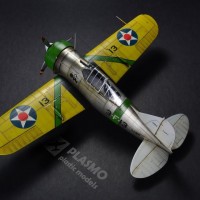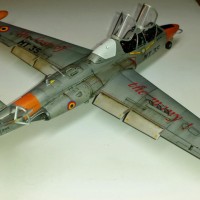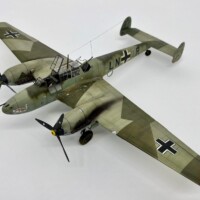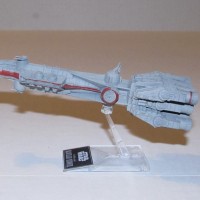Caproni Ca. 100
Here's my build of the Caproni Ca. 100 by Legato in 1:48. I scratch built some fuel lines and vents, rigged the control surfaces with nylon thread, rigged the wings with stainless flat wire, and built the spoked wheels with Eduard PE. Overall, an enjoyable build.
The Caproni 100 was a reverse sesquiplane design, large numbers of which were built in the 1930s and powered by several different engines. It was the standard trainer for the Regia Aeronautica at the time. It was nicknamed “Caproncino” or “Little Caproni”.
Caproni based the design on the DeHavilland Moth, for which Caproni had a production license. The wings were revised so that the upper wing was smaller than the bottom wing, with no sweep or stagger, and the fuel tank was in a streamlined section of the upper wing center section. It first flew in late 1928. The Regia Aeronautica received the first two prototypes and 675 production Caprocinos, built Bergamasche, Breda, Macchi, and C.N.A. 30 of the Macchi built Ca-100s were fitted with floats and were designated Ca. 100 Idro. At least eight Ca. 100s were built for civilian users, and later many ex-miilitary machines found their way to the Civil Register.
There were exports to Portugal and Peru. An all-metal version was built by a Caproni subsidiary in Peru powered by a Kinner B-5 5-cylinder radial of 125 HP and designated Ca. 100PR. They remained in service with the Peruvian Air force until 1946. Four were transferred to the Peruvian Civil Aviation School, where they served until 1956. The Ca.100 was also produced by Caproni's Bulgarian subsidiary as the KB-1 “Peperuda” (Butterfly) powered by the 120 HP Walter NZ 120.
One example of the Ca. 100 Idro established a world seaplane altitude record of 17,467 ft. in 1931.
Two original Ca. 100s are still flying. One is the the ex-military landlplane I-ABMT (MM55194), and the Aero Club Como floatplane I-ABOU is flying off Lake Como. At least one replica is flying.















That is some fine looking work, Chas. Well done!
Thanks, Gary.
Excellent build, Chas.
Thank you, Rafi.
An awesome result and great historical facts, Chas!
Congratulations!
Possibly because I visited lake COMO last Chistmas, I could not restrain myself and googled I-ABOU; what a beauty!
Thanks, Spiros. If I ever get to go there, I will try to snag a ride in it.
So, besides the Italians liking "weird," was there anything aerodynamic about the change in the wings?
Nice work on this and props for that paint scheme.
Yeah, looks like they built a low-wing monoplane but forgot the gas tank. Mount it overhead, add some winglets, and call it an inverted sesquiplane. Problem solved!
Excellent work - it's a nice job on an interesting design. The spoked wheels are particularly impressive. Where they scratch built?
Thanks, Christopher. No, Eduard came out with a spoked wheel PE set many moons ago. Not real easy to deal with.
Molto Bella, Chas!
Fantastic paint work and a great looking build.
Grazie, George.
Pretty little bugger, very well built . Brush painted?
Thanks, Bill. I airbrushed it using poster putty masks.
This is an impressive build, Chas @chasbunch
So much detail, like those spoke wheels for example.
Also the camouflage pattern is done perfectly.
That's one neat looking biplane, love the wheels and the camo paint job, excellent.
Fabulous paint work and build!
Man, that's impressive, Chas! 👏 What a great job with the terrific scratch-work! 🤩
Love it, my sort of thing- weird and esoteric. I want one.
I see they copied a lot from the original Moths— including the issues with bailing out of the front seat. I would not want to try getting out of it in an emergency.
Well, he's great.
Very unusual look with that smaller upper wing! The paint scheme is fantastic, and well-executed. All around great build.